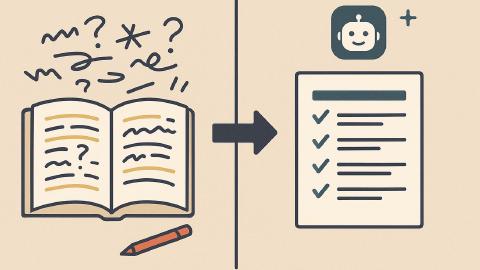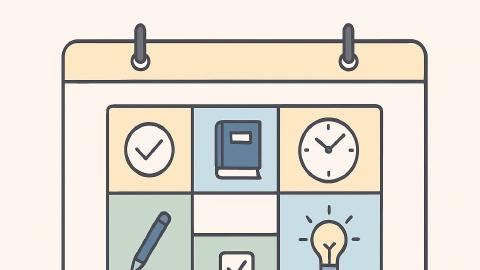Lesson Plan Template: How to Create Lesson Plans For Your Classroom
Use these templates to quickly create lesson plans and save time.
Imagine navigating a vast ocean without a compass or a map. Sounds intimidating, right?
Now, consider teaching as this vast ocean and a lesson plan as your compass and map.
As an educator, you're entrusted with the monumental task of guiding young minds through the sea of knowledge, and your most reliable tool in this journey is an effective lesson plan.
This document is an educator's North Star, illuminating the path from the introduction of a topic to its conclusion, steering the learning experience in a meaningful way.
In this article, we'll dive into the waters of lesson planning, explore its importance, understand its components, discuss different types, share tips to create a top-notch plan, and even provide you with a useful lesson plan template.
So, get ready to chart your course and embark on this exciting voyage!
What is Lesson Planning? - Definition + Goal
Lesson planning is the systematic process of designing a course of study. It is like drafting a blueprint before building a house. You wouldn't start construction without knowing where the doors, windows, or stairs would be, would you?
Similarly, in teaching, you need a comprehensive plan to know what content you'll deliver, how you'll deliver it, and how you'll assess your students' understanding.
A well-crafted lesson plan sets the pace for each class and ensures that all essential topics are covered. It aids in maintaining focus on the objective of the lesson and allows for effective time management.
Furthermore, it helps in making the learning experience more interactive, engaging, and fruitful for the students.
What Goes Into a Lesson Plan? - Common Sections
Typically, a lesson plan comprises several crucial components, each designed to guide the instructional process seamlessly. Let's look at the most common sections:
Objective: This describes what students should know or be able to do at the end of the lesson. Clear objectives guide the development of the lesson and provide a basis for assessing student understanding.
Materials Required: Here, the teacher lists all the resources needed to conduct the lesson. This may include textbooks, videos, handouts, lab equipment, or technology tools.
Procedure: This section outlines the step-by-step activities to be carried out during the lesson. It includes both the teacher's and the students' roles.
Assessment: This refers to how the teacher will check whether the students have met the lesson objectives. It could be through quizzes, assignments, projects, or class discussions.
Homework/Extension: Homework extends learning beyond the classroom, while extension activities help to reinforce or apply what has been learned.
Types of Lesson Plans
There are different types of lesson plans, each serving unique purposes and instructional contexts. The four most common types are:
Daily Lesson Plans
These are designed for a single class period and focus on a specific topic or skill.
Weekly Lesson Plans
These help you prepare for a week of learning and how each day fits into the week's goals.
Unit Lesson Plans
These cover a broader theme or concept and are developed for a series of lessons over a longer period.
Yearlong Lesson Plans
These provide a comprehensive roadmap for the entire academic year, outlining the key topics, themes, and skills to be covered.
Tips to Keep in Mind
Creating an effective lesson plan may seem daunting, but with these handy tips, it becomes manageable:
- Align your plan with learning standards: Ensure your lesson objectives align with the curriculum or standard learning outcomes.
- Consider your students' needs: Tailor your plan to cater to the different learning styles and abilities in your class.
- Make it flexible: Leave room for adjustments. If a lesson isn't working as planned, be willing to adapt on the fly.
- Keep it engaging: Incorporate interactive activities to keep students engaged. Make learning fun!
- Reflect and adjust: After the lesson, reflect on what worked and what didn't. Use these insights to refine your future lesson plans.
How to Save Time With Freqent Tasks + Typing

Saving time and being efficient is important for educators. Use Text Blaze to boost productivity, eliminate repetitive typing, and improve learning outcomes. Text Blaze is a free productivity tool that allows you to insert text templates anywhere online using keyboard shortcuts.
Text Blaze can help you provide feedback to students, grade papers, write lesson plans, send emails, and reduce the amount of time it takes for you to do routine tasks.
Here's why you should give Text Blaze a try:
- It's free forever.
- It can help you personalize your feedback with placeholders (forms).
- You can insert commonly-typed text to save time and reduce burnout.
- It helps you do routine tasks much faster, such as grading and responding to emails.
Join thousands of teams who are using Text Blaze templates.
Free Lesson Plan Template
Feel free to modify these templates to suit your specific teaching needs and the unique dynamics of your class.
Daily Lesson Plan Template
Lesson Title: {formtext: name=lessonname; default=Time travel study of the American Revolution; cols=40}
Objective: {formparagraph: name=objective; default=Through this lesson, students will be able to describe the cause and effects of the American revolution.}
Materials Required: {formparagraph: name=materials; default=- Textbook chapter 1 + 2 - Large post-it note for group notes}
Procedure/Introduction: {formtext: name=introduction; default=crash course video}
Main Activity: {formparagraph: name=activity; default=Students will break into groups and take notes on post-it notes.}
Conclusion: {formparagraph: name=conclusion; default=Each group will present findings to the class.}
Assessment: {formparagraph: name=assessment; default=Students will do research, create an argument, and defend it in front of the class.}
Homework/Extension: {formparagraph: name=homework; default=Upcoming assignments: - Essay - Essay research}
Weekly Lesson Plan Template
Monday: {formparagraph: name=monday; default=Discussion: American revolution start + cause}
Tuesday: {formparagraph: name=tuesday; default=Group work: American revolution key battles}
Wednesday: {formparagraph: name=wednesday; default=American revolution activity}
Thursday: {formparagraph: name=thursday; default=Video + discussion: American revolution results + conclusion}
Friday: {formparagraph: name=friday; default=Presentations: overview of American Revolution and long-term effects}
Join thousands of teams who are using Text Blaze templates.
Unit Lesson Plan Template
Objective: {formparagraph: name=objective; default=Through this lesson, students will be able to describe the cause and effects of the American revolution.}
Introduction: {formtext: name=introduction; default=crash course video + discussion}
Materials: {formparagraph: name=materials; default=textbooks + post-it notes}
Activities: {formparagraph: name=activities; default=battles activity + post-it group work}
Conclusion: {formparagraph: name=conclusion; default=Summarize findings with presentations}
Assessment: {formparagraph: name=assessment; default=Essay on key battles, essay on overall effects}
Year-Long Lesson Plan Template
August: {formparagraph: name=august; default=overview of year's goals, content + intro to American history}
September: {formparagraph: name=september; default=Early American history + founding fathers}
October: {formparagraph: name=october; default=All about the American revolution}
November: {formparagraph: name=november; default=All about the Civil War}
December: {formparagraph: name=december; default=Review AR + CW}
January: {formparagraph: name=january; default=Review previous content + introduce new unit}
February: {formparagraph: name=february; default=Jim crow era}
March: {formparagraph: name=march; default=expansion + new America}
April: {formparagraph: name=april; default=Finalize unit and do final essays}
May: {formparagraph: name=may; default=Review all units + prepare for exams}
More Templates
Check out our teachers gallery page for more templates you can use to save time today!
Conclusion
An effective lesson plan is more than a mere schedule or checklist. It's a carefully constructed roadmap guiding teachers and students on their learning journey.
By including clear objectives, necessary materials, a detailed procedure, appropriate assessments, and homework activities, you create a structured and comprehensive learning environment.
Use Text Blaze to save time, reduce burnout, and improve learning outcomes.
What are you waiting for? Give Text Blaze a try for free today!




